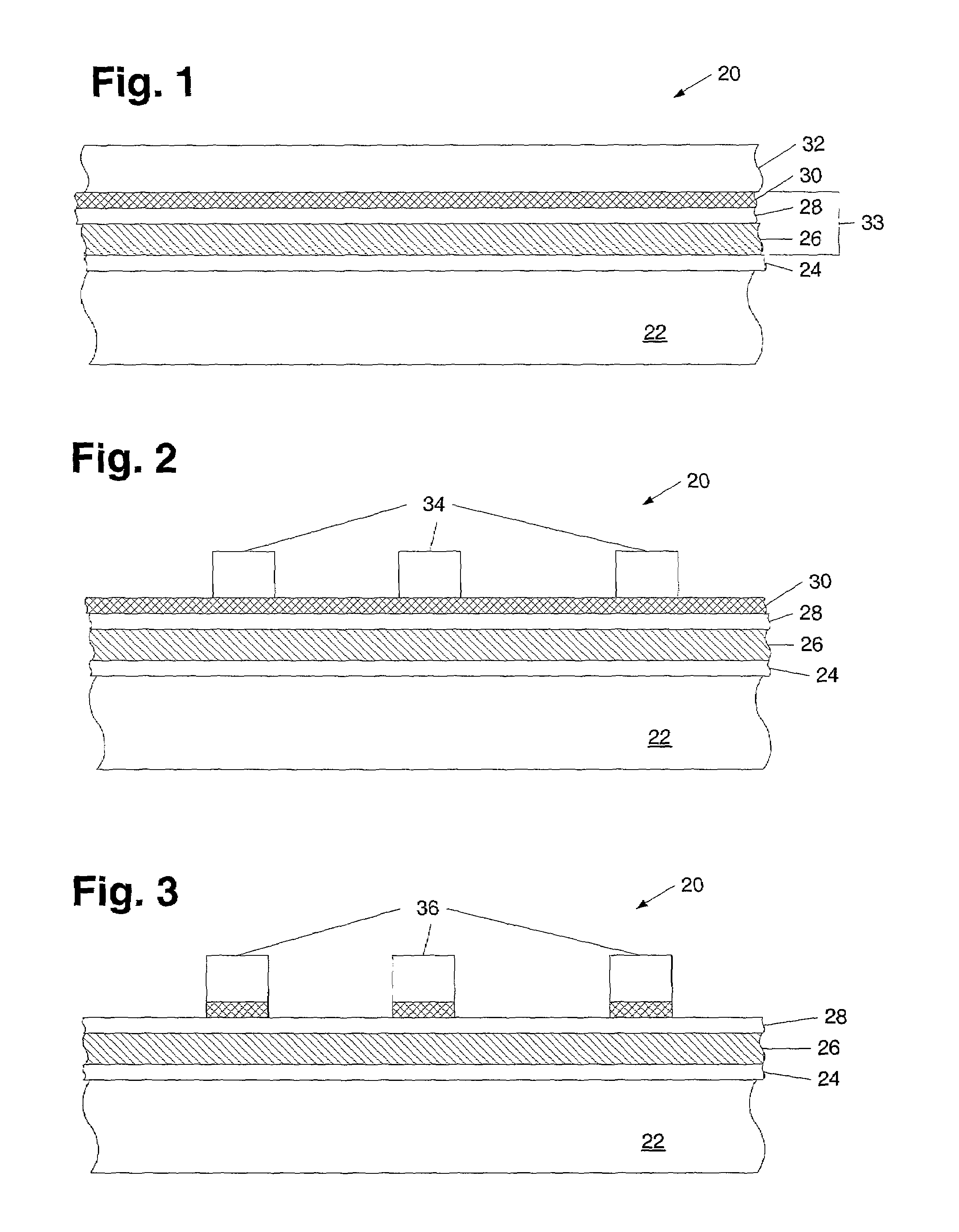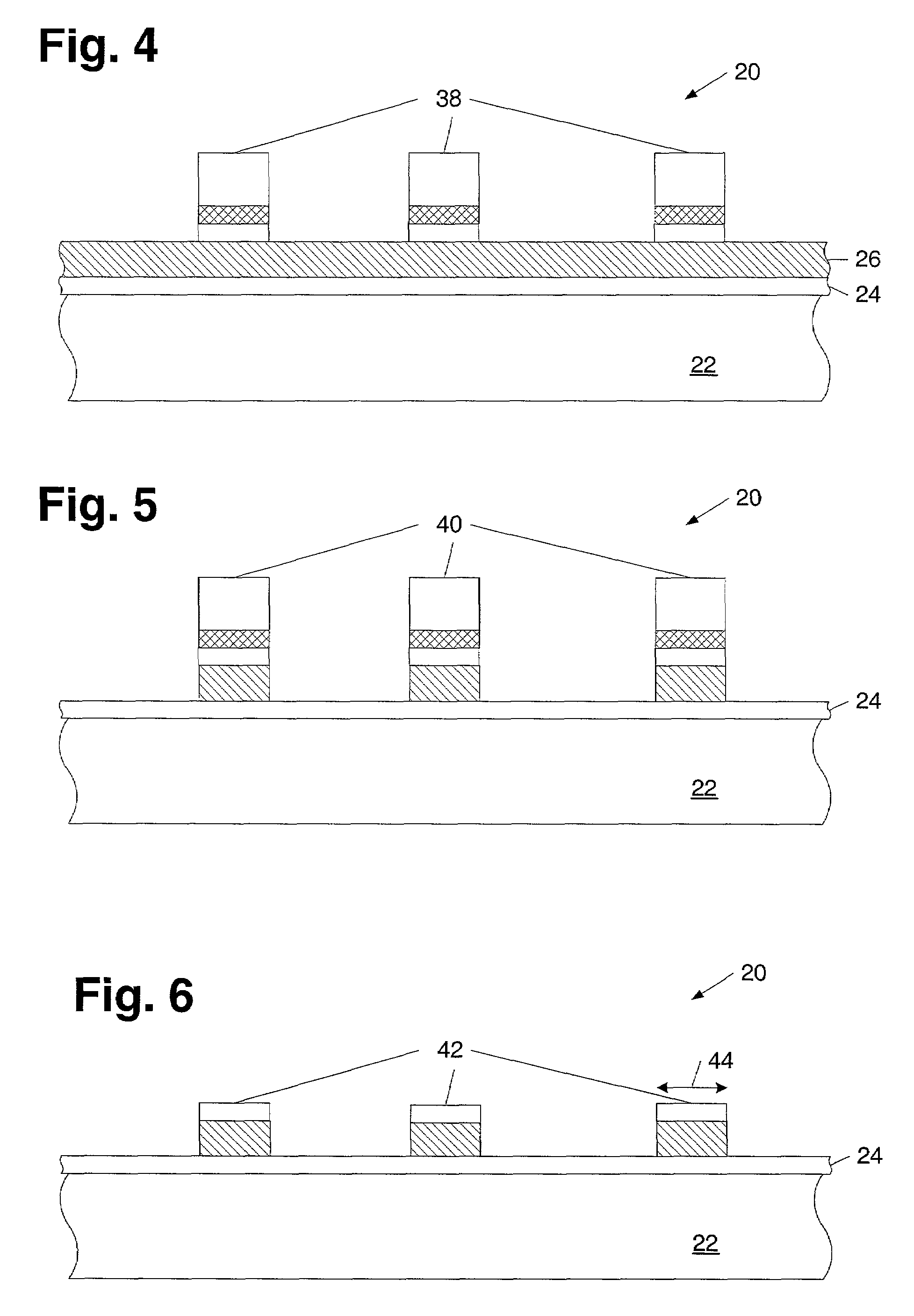Reducing defect formation within an etched semiconductor topography
a technology of etched semiconductors and defect formation, applied in the direction of semiconductor/solid-state device manufacturing, basic electric elements, electric devices, etc., can solve the problems of preventing sufficient contact, increasing the resistance of contact, failure of a subsequently formed integrated circuit, etc., to reduce the formation of defects or remove them
- Summary
- Abstract
- Description
- Claims
- Application Information
AI Technical Summary
Benefits of technology
Problems solved by technology
Method used
Image
Examples
Embodiment Construction
[0028]Turning to the drawings, exemplary embodiments of a method for processing a semiconductor topography are shown in FIGS. 1–12. In particular, a method is provided which includes etching one or more layers in an etch chamber while introducing a noble gas heavier than helium into the etch chamber. In a preferred embodiment, the introduction of such a noble gas may reduce the formation of or remove defects within an etched portion of the semiconductor topography. FIG. 1 depicts a partial cross-sectional view of semiconductor topography 20 in which a plurality of layers is formed upon and in contact with each other. In particular, semiconductor topography 20 may include dielectric 24 interposed between semiconductor layer 22 and stack of layers 33. In some cases, dielectric 24 may be regarded as part of stack of layers 33. Alternatively, dielectric 24 may be considered separate from stack of layers 33. In addition, resist layer 32 may be formed above stack of layers 33. In some emb...
PUM
 Login to View More
Login to View More Abstract
Description
Claims
Application Information
 Login to View More
Login to View More - R&D
- Intellectual Property
- Life Sciences
- Materials
- Tech Scout
- Unparalleled Data Quality
- Higher Quality Content
- 60% Fewer Hallucinations
Browse by: Latest US Patents, China's latest patents, Technical Efficacy Thesaurus, Application Domain, Technology Topic, Popular Technical Reports.
© 2025 PatSnap. All rights reserved.Legal|Privacy policy|Modern Slavery Act Transparency Statement|Sitemap|About US| Contact US: help@patsnap.com



